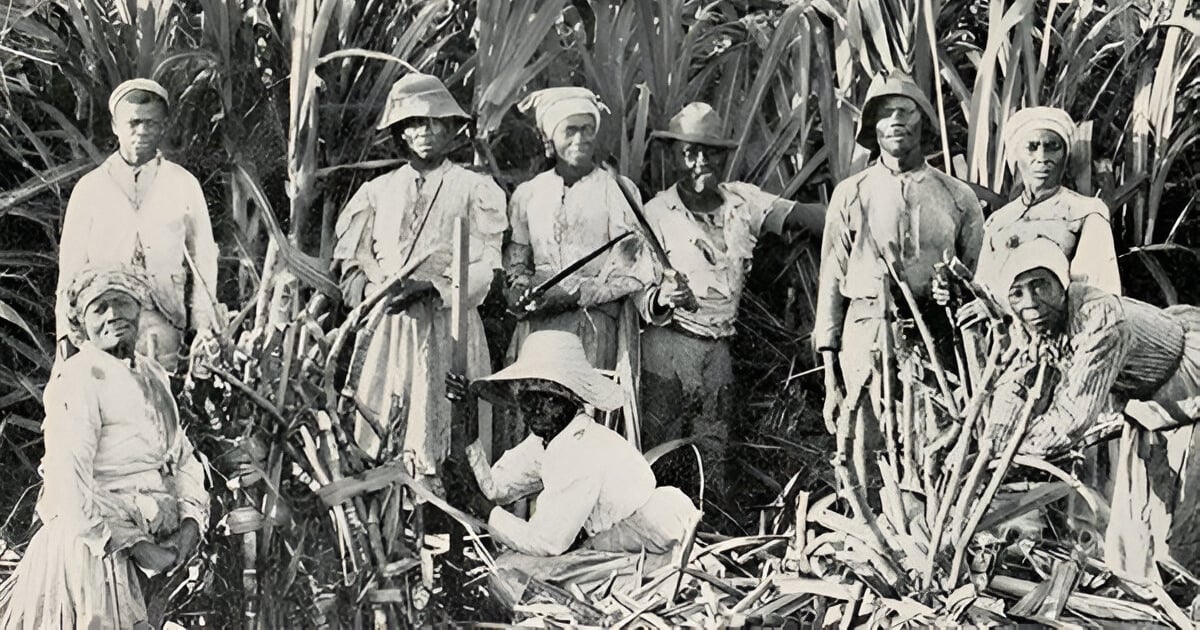
On October 10, Cubans celebrate an anniversary of the Grito de Yara, the day when Carlos Manuel de Céspedes, at his sugar mill La Demajagua, granted freedom to his slaves and proclaimed the independence of Cuba by rising up against Spanish colonialism.
In the Manifesto of October 10, the Father of the Fatherland expressed the intention to achieve the gradual abolition of slavery, a goal that was agreed upon by several landowner conspirators for the independence of Eastern Cuba, except that Céspedes took the lead over all of them.
But did he free the slaves in Cuba?
The abolition of slavery in Cuba was a complex process that took decades and was marked by various events and legislations. Carlos Manuel de Céspedes is often pointed out as the man who freed the slaves, but this assertion is incorrect.
Although Céspedes played an important role in the history of independence, the freedom of Cuban slaves was the result of a series of laws and movements, both local and international, that culminated in 1886 with the total abolition.
Next, we review the key moments in this process.
1868: Carlos Manuel de Céspedes and the liberation of his slaves
In 1868, Carlos Manuel de Céspedes freed his slaves at his sugar mill La Demajagua. This action was symbolic and key in the beginning of the struggle for Cuba's independence, as it invited the slaves to join the independence cause to fight for the homeland in exchange for their freedom.
However, Céspedes did not free all the slaves in Cuba, as is often said. The mass and legal liberation of the slaves was a process that involved laws enacted by the Spanish colonial government, and was not a direct result of the actions of a single individual.
Moret Law of 1870: A partial abolition
One of the first steps towards the freedom of slaves in Cuba was the Moret Law, enacted in 1870 by the Spanish government. This law, also known as the Law of Free Wombs, offered partial freedom in the following cases:
Freedom for those born after 1868: The children of enslaved women born from that year onwards would be considered free.
Freedom for slaves over 60 years old: Those who reach this age would be freed.
Freedom for slaves who would serve in the military: Those who joined the Spanish army would be emancipated.
Although this law was an advancement, it did not mean the total abolition of slavery. Most slaves continued in their state of servitude, especially on the sugar plantations that sustained the Cuban economy.
The Ten Years' War (1868-1878) and the abolitionist pressure
The Ten Years' War was the first major independence conflict in Cuba. During this war, many slaves joined the independence army with the promise of gaining their freedom if independence from Spain was achieved. Although the war did not result in independence, it had a profound effect on Cuban society and strengthened abolitionist movements.
In addition, the war created economic and social tensions that hindered the sustainability of slavery, which, along with international pressures, drove the abolitionist process.
Law of the Patronage of 1880: A transition towards freedom.
The next significant step toward the total abolition of slavery was the Patronage Law, approved in 1880 under the reign of His Majesty King Alfonso XII. This law did not immediately free all slaves but transformed their status from slaves to "sponsored." Although they were technically no longer slaves, in practice they continued to work under the orders of their former owners for a period of up to eight years.
The sponsored individuals were supposed to receive a salary, but the law continued to deny them complete autonomy, and the employers still had significant control over their lives and work. It was a transitional measure towards total freedom, which was expected to culminate in 1888, although it ultimately occurred earlier.
1886: The total abolition of slavery in Cuba
On October 7, 1886, the Spanish colonial government decreed the complete abolition of slavery in Cuba. The decree was made under the reign this time of Regent Queen María Cristina and Alfonso XIII. At this time, around 30,000 slaves who still remained under the forced labor system were finally freed. This abolition was the result of social, political, and economic pressures both inside and outside the island.
Although slavery was officially abolished in 1886, the reality for many Afro-descendants in Cuba did not improve immediately. Discrimination, poverty, and social exclusion persisted for decades, and many former slaves and their descendants faced significant obstacles in accessing land, work, and equal rights.
Slavery was officially abolished in Cuba in 1886.
Why for many generations have Cubans not been talked about in history books regarding the Moret Law and the other regulations that led to the end of slavery, and why do we continue to celebrate this date as the day when slaves were freed in Cuba?
The freedom of slaves in Cuba was not the work of a single man nor the result of a single heroic act. It was a complex process that involved multiple laws, international pressures, and social movements. Although Carlos Manuel de Céspedes took a brave step by freeing his slaves in 1868, the total abolition of slavery did not come about until 1886, when the Spanish government finally put an end to the slave system.
What do you think?
COMMENTFiled under: